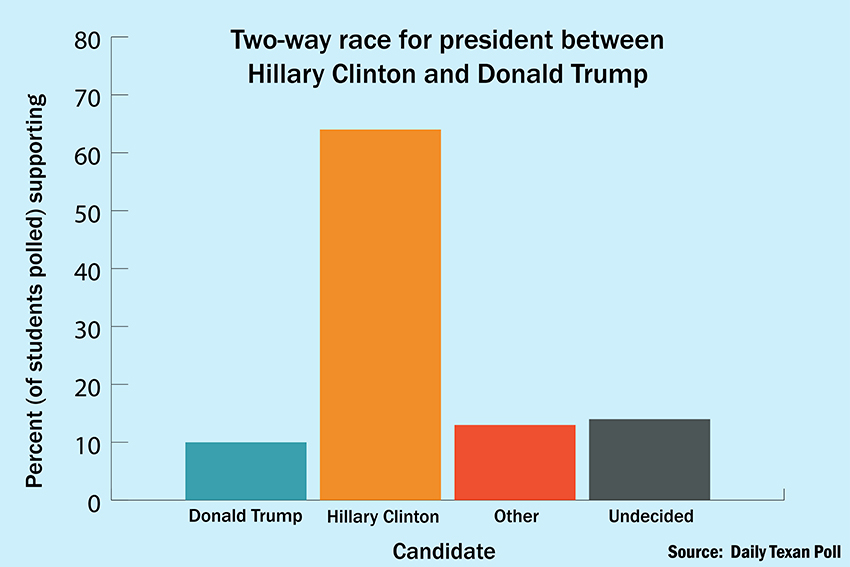Donald Trump is not, as he would say, winning “big league” among young voters. As a recent poll from The Daily Texan displayed, Trump earns the support of nearly 10 percent of UT Austin students. Does a similar level of support exist among other young voters? Does that low level of support translate to problems for other Republican elected officials in Texas? A look into public opinion polls and voter behavior reveals an abundance of useful information.
Primarily we should turn our focus to polls of the presidential election in Texas — which, contrary to popular belief, do not show a purple Lone Star State. Specifically, let’s look at the youth vote cross tabs in these surveys. The most recent poll from SurveyUSA shows that just 28 percent of voters under age 34 support the Republican nominee, as opposed to 54 percent for the Democrat. Public Policy Polling found a similar level of support for Donald Trump, pegging his support among those aged 18–29 at 27 percent. Lastly, a University of Texas/Texas Tribune poll found Donald Trump has 32 percent of support among voters 18–29 years old. The polls are in agreement: Donald Trump doesn’t have the support of America’s youngest voters, especially the college-educated.
To be sure this low level of support for the Republican nominee isn’t simply because of his characteristics (which can influence voters’ decisions), we should take a trip back in time to previous elections. Exit poll results documented by the Roper Center show that in 2008, a young Barack Obama beat John McCain with 34 percent more of the youth vote, the Republican senator earning only 32 percent when all was told. In 2012, Barack Obama’s lead among the youth was 23 percent, with Mitt Romney winning only 37 percent of young voters. Trump’s deficit among voters, then, is nothing new.
Although it is widely known that young voters are failing to vote in increasing numbers, it is also true that millennials are failing to identify with the Republican party. Take a look around your classroom or imagine a group of youths. Just three out of 10 of them are Republicans, five are Democrats and two are unaffiliated. Over time, youth abandonment of the GOP has coupled with a decrease in voter turnout to create the perfect storm for Republican leaders. Donald Trump, with his record unpopularity among millennials, made that storm even worse.
In terms of the 2016 election, and as if to add insult to injury, Donald Trump’s recent misgivings seem to have infected various Republican Senate races. This is evident in both the plummeting probability of a GOP Senate majority and the abandonment of the presidential nominee by many senators from reddish states.
Put simply, the state of politics today is not one in which young voters widely participate, and this is doubly true for the Republican Party. Given that the fate of many federal legislators could be tied to that of Donald Trump, short-term consequences could mean more blue seats in Congress, as well as state legislatures. Long-term consequences could be more dire, however, if trends in voter behavior have any staying power.
Morris is a government and computer science junior from Port Aransas. Follow him on Twitter @gelliottmorris.





















